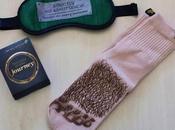
Primo numero per questa nuova rubrica di approfondimento del Posto Nero, Open Circle, dedicata ai lettori, agli appassionati e operatori sel settore. Open Circle per ogni numero presenterà un titolo di un autore rappresentato dalla Agenzia Letteraria Dark Circle; oltre alla descrizione del libro e al profilo dell'autore, saranno pubblicati ogni volta contributi inediti e esclusivi: estratti delle opere, racconti, frammenti, che consentiranno di conoscere e leggere online autori di genere internazionali, e nel caso di autori italiani, approfondire titoli già pubblicati, attraverso esclusive e dietro le quinte, di conoscere i nuovi progetti dell'autore e leggere in anteprima alcune opere inedite. Una rubrica che oltre a essere dedicata ai lettori di genere horror, dark fantasy e thriller, che potranno leggere grandi anteprime e contenuti, sarà utile a operatori del settore e editori per conoscere e valutare opere e autori di Dark Circle, che rappresenta in esclusiva i diritti di pubblicazione in Italia, o sui mercati esteri a seconda dei casi, di tutte le opere che saranno presentate.
Questo primo numero è dedicato al romanzo The Burden of Indigo, di Gene O'Neill, un grande autore di genere americano, vincitore del Bram Stoker Award e più volte finalista, premiato con numerosi altri premi internazionali. Ha scritto diversi romanzi, antologie e racconti, tradotti in vari paesi, tra i quali Francia, Spagna e Russia. Alla fine dell'articolo troverete un sintetico profilo dell'autore.
The Burden of Indigo, pubblicato per la prima volta nel 2002, combina elementi sci-fi, fantasy e horror, ed è ambientato in un futuro imprecisato. La Terra ha subito un collasso, che ha portato alla distruzione di gran parte della civiltà; lo scenario è post-apocalittico, città in rovina, la natura selvaggia che ha riconquistato i suoi spazi. L'umanità vive in nuove città stato costruite dopo il collasso globale, mentre gli altri spazi sono abitati dai freemen, le persone che vivono fuori dalle nuove città, tra strade e terreni abbandonati. Il protagonista della storia è Gaeton Nuccion, che commette un crimine contro un ragazzo tra le rovine vicine alla città di Ocino, dove i freemen scambiano e vendono merci. Gaeton viene riconosciuto colpevole, dipinto di indaco dalla testa ai piedi, il colore caratteristico di certi crimini sessuali, ed esiliato dalla città. L'autore ci racconta la storia dell'esilio di Gaeton, ormai vecchio, che per trent'anni ha vagato come un reietto nella speranza, o nell'illusione, che il suo colore, l'indaco, con il tempo svanisca e possa tornare a essere un uomo libero. Nonostante i crimini commessi, l'autore ci fa entrare lentamente in empatia con il protagonista, facendoci riflettere sulla punizione dei crimini, e le ultime conseguenze. La persona col tempo cambia, è qualcosa di diverso, oppure in fondo vive sempre lo stesso uomo, quello pronto a tornare al crimine da un momento all'altro?
Gene O'Neill, in uno scenario suggestivo e tra storie che si intrecciano, non offre al lettore delle risposte alle tante domande che la sua storia evoca e trascina, ma lascia campo aperto per una profonda, e personale, riflessione. Problematiche sociali e morali arricchiscono questo romanzo, che non è etichettabile come genere, ma nel quale l'oscurità si percepisce, come un'ombra che ci segue. Come parte di noi stessi, nel tempo.
The Burden of Indigo non è stato ancora pubblicato in Italia, per maggiori informazioni sui diritti di pubblicazione di quest'opera potete contattare Dark Circle che rappresenta in esclusiva tutte le opere di Gene O'Neill per il mercato Italiano.

Per conoscere e apprezzare la narrativa e lo stile dell'autore, sotto riporto un estratto del primo capitolo del romanzo The Burden of Indigo, in lingua originale, che riesce a evidenziare, nonostante i limiti di un breve passaggio, alcune interessanti caratteristiche di questa opera e della narrativa di Gene O'Neill, un grande autore, che non si accontenta di disegnare per noi forti emozioni, ma che riesce a evocare riflessioni importanti e molto attuali. Questo libro, dopo aver letto l'ultima pagina, continua a stare a lungo con noi, come un'ombra che continua a seguirci, a distanza, ma con determinazione. Una strana ombra colorata di indaco, un'azzurro che col tempo diventa sempre più acceso e brillante.
The Burden of Indigo di Gene O'Neill: estratto dal primo capitolo
THE JOURNAL: FIRST ENTRY
“There is no greater punishment than that of being abandoned to one’s self.” --Pasquier Quesnel
ONE
The sun slides behind the rolling hills, leaving the cloudy sky streaked with neon-pinks, -oranges, and -violets. Out of the darkening hills, a band of gray extends across the valley, neatly dividing golden fields of hay and emerald ponds of rice, bypassing a Freemen village and continuing east, the band of faded asphalt a pre-Collapse relic, a multi-laned highway separated by a thin median. The median plants, once carefully tended, are mostly dead, only a few grimy oleanders surviving to do battle with weeds, crab grass, and lack of water. Long gone, too, are the white stripes that carefully divided the highway into lanes, the once smooth surface cracked and pitted with potholes sprouting bunches of field grass. As the day dies, a stillness settles over the western section of the highway, nothing moving. Suddenly a last heat wave shimmers off the road, and from the perceptual distortion a figure emerges like an apparition. It is a man, ambling along close to the median with the energy-conserving gait of an experienced wanderer. Even at a distance his dress appears odd, not the bundled-up style of the Freemen, for he wears neither hat nor coat. His old-style shirt and pants are coated with dust, his shoulders rounded and slumped as if he carries a much heavier load than a small backpack. In one hand he clutches a polished walking stick, his only adornment. Nearing the outskirts of the village, he stops, most of his body shadowed by a huge oleander, and he glances back, shading his eyes and watching the sun slip completely from sight. After a moment he steps from the cover of the plant and makes his way across the undivided lanes, stopping again on the shoulder of the road overlooking the Freemen village. Only then, as the man stands frozen in the twilight, does his most curious physical characteristic become apparent: He is the color of dark blue ink; his hair, beard, and all exposed skin are dyed a deep indigo. He is old, his face heavily wrinkled, deep crow’s feet radiating from the corners of his squinting eyes—he wears a lifetime outdoors etched onto his dark blue features. For a moment, the Indigo Man cocks his head, listening, his body tense and wary; then, he sniffs the air like an animal. He peers intently down into the village, maintaining his alert, guarded posture. He knows he can not be too careful, for the peaceful-appearing farming villages often contain unpleasant surprises for his kind. As time passes he remains motionless, all his senses alert for the slightest hint of danger. The village is a small collection of tents, shacks, and sheds, all lining a single unpaved street. As full darkness descends, bullfrogs begin croaking from the distant rice checks, accompanied by a chorus of crickets chirruping. A mosquito buzzes near the Indigo Man’s ear, but he ignores the tiny pest, not lifting a hand, not even twitching a muscle in his face. Statue-like, he continues to peer down into the village. Here and there, he sees candles and lanterns flaring to life, but no one is moving on the empty main street, not even a dog. Finally, a thin smile breaks across the Indigo Man’s unshaven face, softening some of the wrinkles, easing the harshness of expression, for he realizes he has reached the village just at mealtime. Good, he thinks, thankful for the fortunate timing of his arrival. Nevertheless, he works his way cautiously down the loose slope of the highway, approaching the street quietly and gripping his walking stick tightly for security. Silently, he creeps past a few shacks, moving down the center of the dusty street. He passes closely to a tent on his right, candlelight flickering through the cracked entrance flap and cooking smells hanging heavy in the air. Stomach grumbling a protest, the Indigo Man moves on, pausing in front of a wood-frame building, the largest structure on the street. Slipping into the darkness below the building’s overhang, he spots a hand-printed sign in the left corner of the grimy window: ARBUCKLE RICE CO-OP AND GENERAL STORE. The Indigo Man grins wryly; and he asks himself: A Freemen co-operative? Almost an oxymoron, something he has never seen before in the wasteland. He presses his nose flat against the glass, peering into the unlit interior, but he is unable to see more than two barrels and some baskets of un-shucked corn--too dark to read the marking on the barrels. He backs away from the window and turns, glancing both ways before leaving the shadowed storefront. Still moving quietly, the Indigo Man continues down the street to an old hummerpad. Unlike the shacks, the pad looks solid, substantial. On the far side of the disc of concrete he finds the heavy metal door built into the side of the pad with its inoperative palm sensor and the faded designation: Ocino Shield, SE 41. Again, he smiles to himself, wondering if anyone in the village remembers its primary function? Perhaps a few of the elders, he thinks. In the old days, when the wasteland was too hazardous to harbor any villages, this had been an isolated supply cache for his kind, this one serviced by hummer from Ocino Shield, one of the Company’s five coastal domed cities. The Indigo Man takes a deep breath, then he moves along, past a shed with padlocked doors, metal drums stacked along one side, one bearing the white letters: DIESEL, until a few more paces down the street he passes another wood-frame building, half the size of the store, but freshly painted white. A meeting hall or perhaps even a school? He can’t tell from the front and doesn’t care to peek in a side window. At the end of the street, beyond the village proper sits an isolated Quonset hut—his destination. The Indigo Man approaches the front of the structure, and breathes a long sigh. Scrawled on the hut’s door in large red letters he reads: Dyed People. As he touches the red scrawl, his gaze blurs, and the words alter and seem to read: Dead People. The distortion makes the Indigo Man shudder, despite the muggy humidity. He blinks away the ominous image; and spreading the fingers of his right hand, he palms the sensor inset built into the ribbed wall right of the door jamb. Then, he waits patiently for one of the Company computers in Ocino Shield to record his present location. The awareness of being tracked makes no emotional impact on the Indigo Man’s sensibilities; it is an ever day fact of his existence, and long, long ago he grew accustomed to it. Whirr…click. The metal door into the hut snaps open a crack. With his left hand the Indigo Man cautiously pushes the door open fully, gripping his walking stick tightly in his other hand, letting the fading twilight provide some illumination to into the darkened interior. As always he has mixed feelings at this moment of entry--apprehensive of lurking danger, but, at the same time, hopeful for congenial company. Tentatively he takes one step inside, letting the door swing in behind him. Standing in place, he is overwhelmed by dead silence. Within a step or two forward is a wooden table and a dish with a candle and several matches. Quickly, he moves forward and lights the thick candle, holding it up and examining the interior of the hut, the flickering light making shadows dance along the curved left wall. To his right, partitions separate the hut into four sleeping cubicles. He stares into the door-less first cell which contains only a cot with one wadded-up, faded gray blanket. He continues the cursory inspection. At the far end of the hut a door hangs from a broken hinge, labeled: TOLIET. He can’t see into the darkened area beyond the broken door, but he can smell the acrid, biting odor of disinfectant emanating from within. Something catches his eye. A large cockroach scurrying away from the candlelight, disappearing beneath the first cubicle partition. He lowers the candle slightly, turning his attention to the table. There are two wooden chairs, both scratched and scarred by years of use. On one chair lie two old-style books. Without touching either, the Indigo Man knows that most of the yellow, brittle pages will be long gone--used by previous tenants for toilet paper. Before moving again the Indigo Man lets his gaze scan the hut once more, the wrinkles across his forehead deepening into a frown. His spirit sags. He had hoped to share the evening with another of his kind. But he’s all alone, by himself in this filthy, stinking place. He sets the candle back on the table. Then, sighing again, the Indigo Man turns around, spotting the vending machine set into the front wall beside the entry. He drops his pack and stick on top of the books, then rummages through his stuff for his cup and bowl. With both in hand, he steps back to the machine, inserts them into the proper slots and palms the machine’s sensor. After cup and bowl are filled, he returns to the table and candlelight, slumping down heavily into the empty chair, reaching over and digging his spoon from the backpack. He eats mechanically, spooning up and chewing each mouthful of weak stew thoroughly, before washing it down with a gulp of the unsweetened, lukewarm tea. In a few minutes he is through with the simple meal. Then, with a good deal more enthusiasm, the Indigo Man rises and returns to the vending machine for his allotment of Smoke. He returns to his seat, cracks the ampoule, and deeply inhales the blue vapor. Almost immediately he stiffens, feeling a grabbing sensation at the base of his skull just above his neck, almost as if he’d been struck a blow, except there is no pain. This sensation is followed by a warm, almost liquid feeling that flows down his spine, relaxing and washing away his fatigue. His despair and loneliness are forgotten, replaced by an overwhelming sense of wellbeing. For several minutes he sits quietly relaxed, unaware now of the dismal surroundings, enjoying the euphoric impact of the drug. Finally, the Indigo Man takes a long deep breath as the drug’s effects gradually diminish. He reaches back and massages his neck. Then, he bends over his pack again and digs out a small journal and pen. After opening the book, he pauses, pen hovering over the blank page as he prepares to begin. First, the date, he thinks… But the Indigo Man does not know the month or even the day. Sadly he shakes his head. After another few moments of hesitation, he begins to write very slowly, almost stiffly, the pen feeling awkward and clumsy in his hand. And he finds himself pausing often to capture his exact thoughts. (...)

Profilo dell'autore
Gene O'Neill: Scrittore statunitense di narrativa horror e dark fantasy, ha vinto il Bram Stoker award, oltre diverse nominations ricevute nelle varie categorie. Oltre cento delle sue opere sono state pubblicate dal 1979, della quali circa quindici tra romanzi e novelle. Alcuni suoi lavori: The Burden of Indigo, The Confessions of St. Zach, White Tribe, Doc Good's Travelling Show, Taste of Tenderloin, Not Fade Away
Dark Circle rappresenta Gene O’Neill in esclusiva per il mercato italiano. Per maggiori informazioni sull'autore e sulle sue opere: [email protected]
 www.darkcircle.it
www.darkcircle.it





